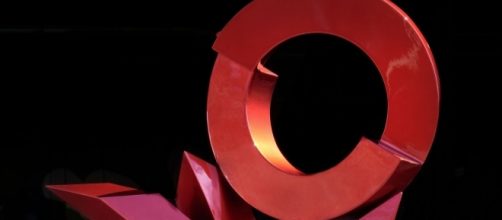Rob Lorenson is an Artist primarily known for his sculptural creations. Rob holds a BFA and an MFA, and his work has been exhibited internationally. Moreover, Rob’s often colorful pieces can be found in more than two-hundred private and public collections as well as in various art fairs and events.
Rob also recently displayed work at New York City’s regaled ArtExpo. From his home studio in southeastern Massachusetts, he recently discussed his profession as an artist and his experiences and processes of creating his art which ranges in size from very small to very large.
Sculpture
Blasting News (BN): What inspired you to embrace sculpture and what geared you to your choice mediums and styles?
Rob Lorenson (RL): Sculpture is easy to embrace when you have a love of object making and of craft. I like that sculpture can be a pure expression of form and not simply subservient to serving a purpose. The forms come from many things. The circle has been an often-used form. It comes directly from nature. The most stunning things in nature involve the circle, the sun, the moon, the center of a flower.
The circle is often split to reveal the notion of a cycle. Life cycles, the day, the week, the year are all cycles that we exist in. The forms are either precariously balanced or welded in such a way that the forms appear in motion.
While these are rigidly welded, I fight that notion aesthetically. The sculptures also have animalistic traits, sometimes mimicking human and animal form. While they are abstract, they hint at many things without being anything. The viewer's mind fills in the voids the way they want to perceive them.
BN: How many pieces of art have you created in total and where have you displayed your work?
RL: I don't have a good sense of how many pieces of art, there are too many to count. I can enumerate it by saying I have nearly 300 sculptures in public and private collections. I have major public works in Sarasota Florida, Tampa Florida, Vienna Virginia, Purdue University, Cary, North Carolina, San Francisco, CA and Atlanta, GA to name a few.
BN: Do you have any favorite pieces and what kind of paints do you use most?
RL: I really cannot pick favorites. Works get created for a lot of reasons and spaces. I do my work in lots of metals. When choosing to paint something I make it out of aluminum. The paints are mostly urethanes like those used on custom cars and Fed Ex-Jets. Industrial stuff that will last in constant UV exposure I am a fan of whatever will last. The sculpture is often put out and left completely defenseless to the elements. I have to make sure whatever we use it will last at least ten years.
Artwork
BN: What is the most rewarding thing about being an artist for a career and what advice can you give to people who are trying to become professional creators too?
RL: Make lots of work and be prepared to work hard with no reward in sight. The art world does reward those with courage, determination, and the persistence to make what is theirs. Making to what is in the Whitney Biennial will get you nowhere, make what comes from you.
BN: What are your career highlights thus far and biggest goals at the moment?
RL: Every day in the studio is a career highlight! I am not motivated by showing at the gallery or museum. Although sharing my work is an important part of what I do, it does not drive the process. My real motivation is just doing it and all other aspects of career feed into the idea of having a pile of material and the time to manipulate it to fit my aesthetic goals.
BN: Do you want to try out any new mediums soon and what is forthcoming for you?
RL: I am working a lot with 3D printing using a Stereo Lithography Process. It has the potential to create a new marketing paradigm in sculpture that had only existed in casting. Casting in metals is a process that is expensive and as complicated as making one of a kind. With the printing process, you can share a design many times without the work of duplication. For me it allows the artist to concentrate on creative processes rather than production processes.

